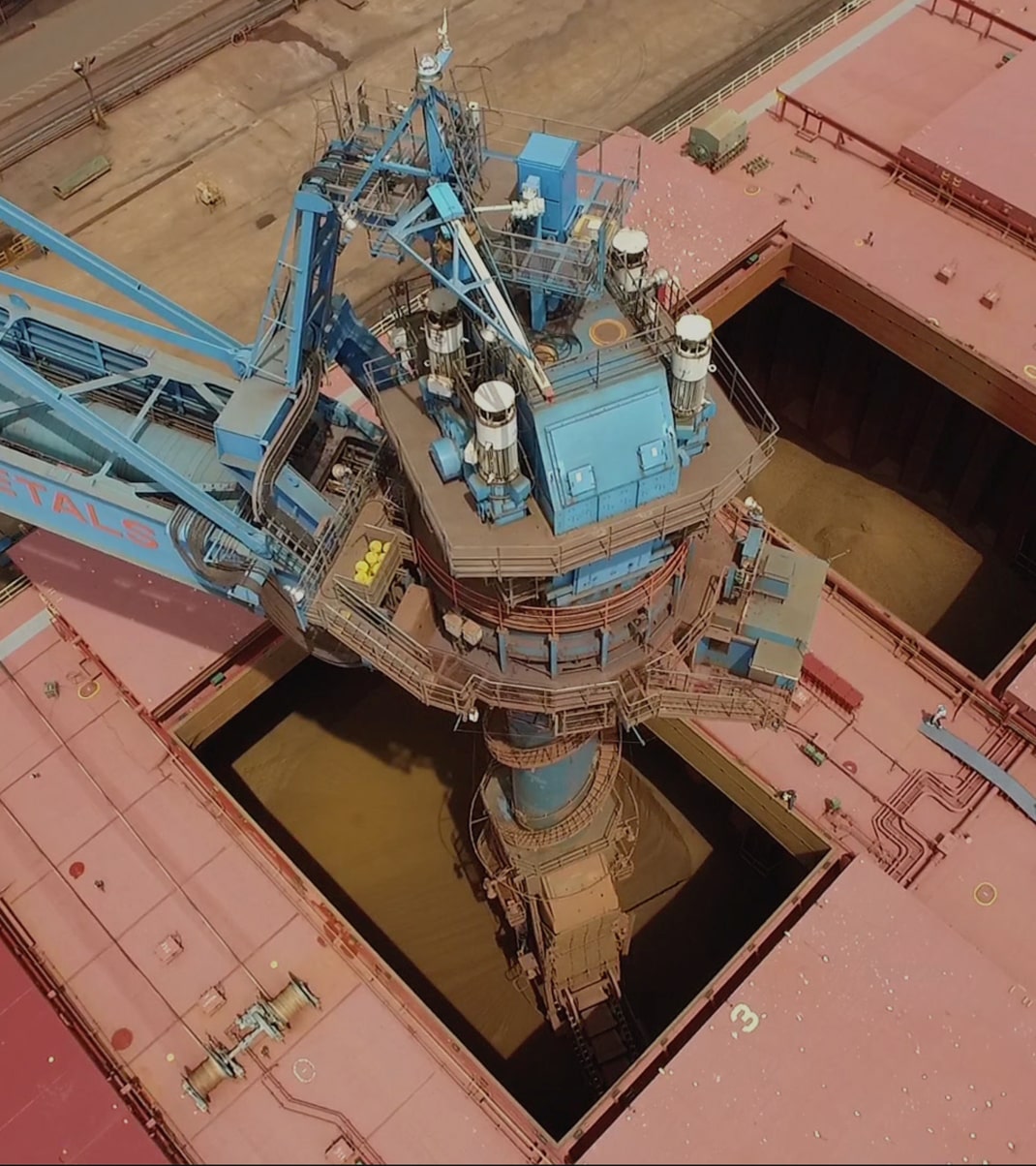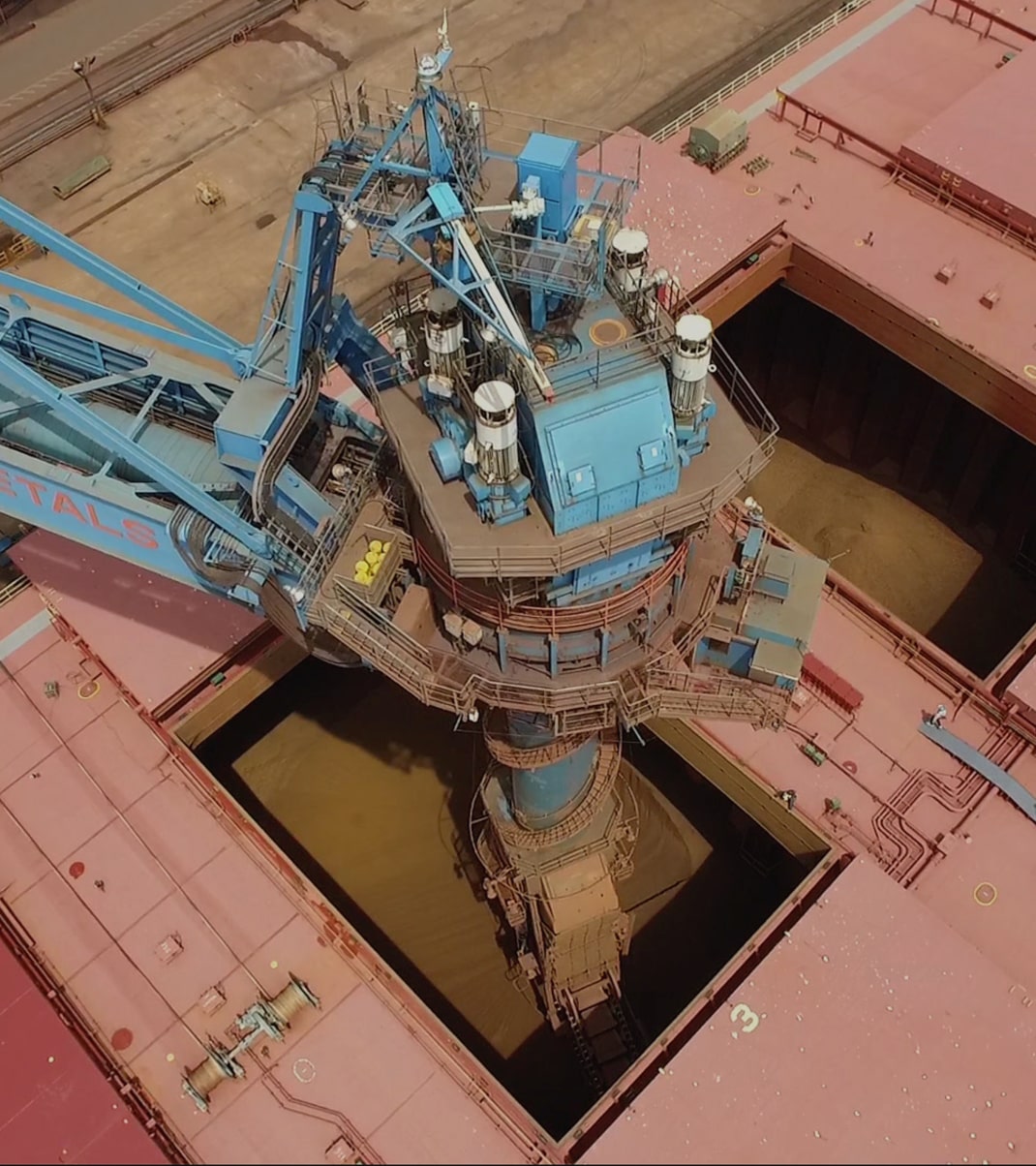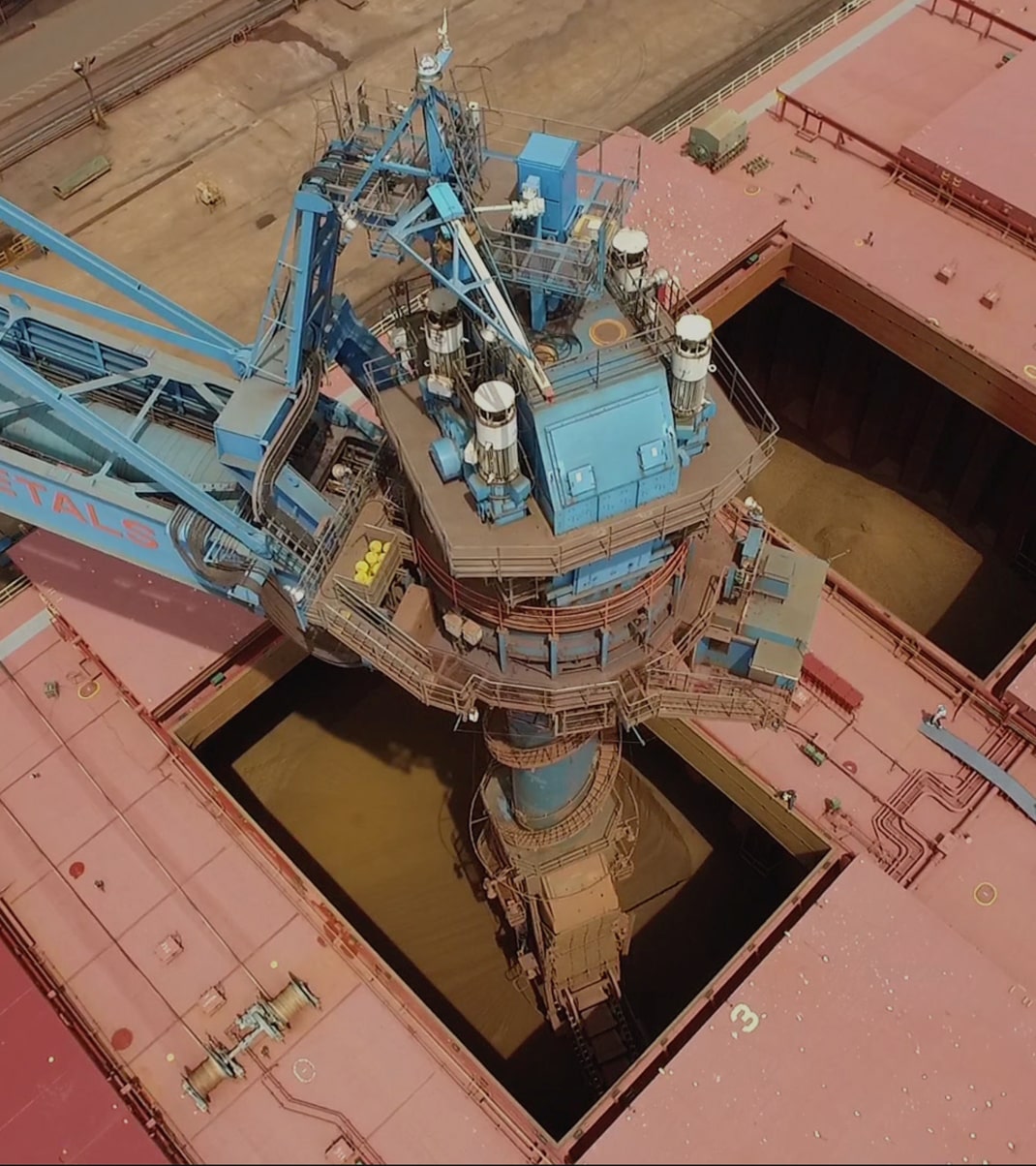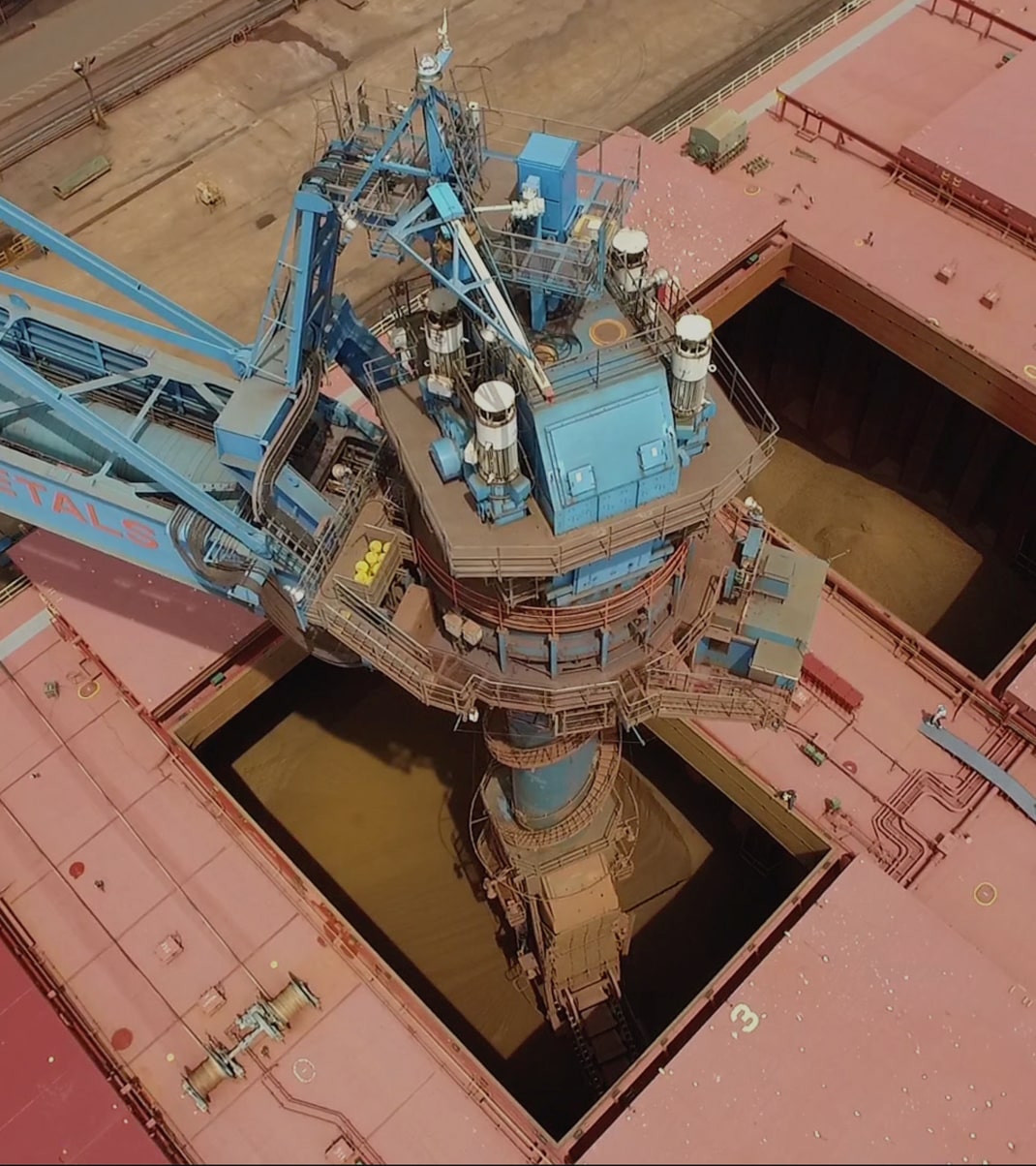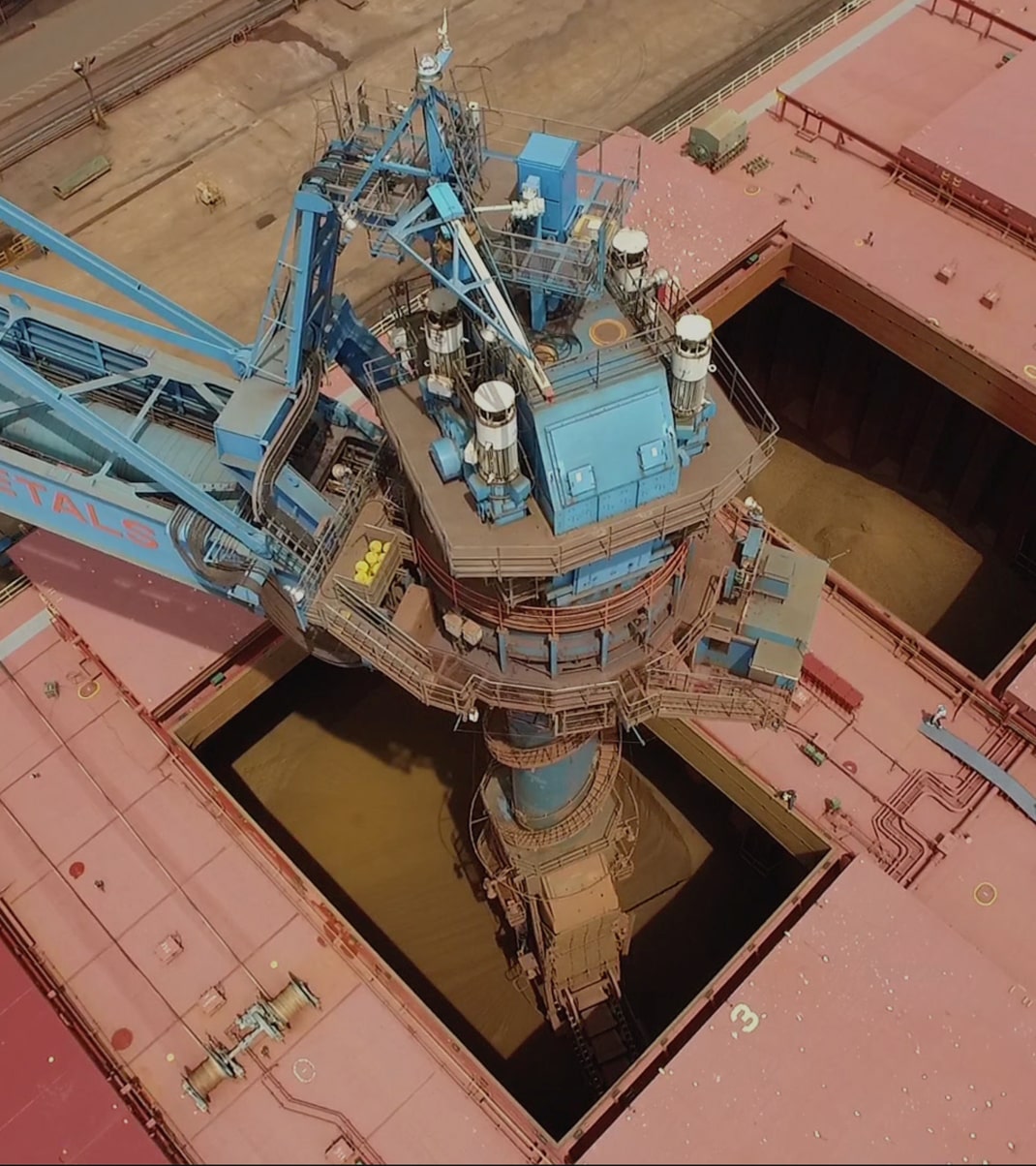

SUSTAINABILITY
Contributing to building a society with reduced environmental burden
Nippon Steel’s Activities against climate change
Nippon Steel’s current energy-conservation initiatives
Nippon Steel has been working on energy conservation from diverse starting points: improving efficient use of energy generated in steelmaking process (i.e., power generation from recovered by-product gas and waste heat); making operational improvements in each process; renovation of older coke ovens and other equipment; introduction of high-efficiency power generation facilities and oxygen plants; conversion to regenerative burners in reheating furnace. As a result of these continual efforts, the Nippon Steel Group consumed 1,089 petajoules (PJ) of energy in fiscal 2019, down about 13% vs. the volume in fiscal 1990.
CO2 emissions intensity increased from the previous year to 2.06 t-CO2/ton in fiscal 2019 as production output declined partly due to COVID-19, however CO2 emission dropped by about 12% relative to fiscal 1990 to 94 million tons (preliminary).
Nippon Steel’s energy consumption
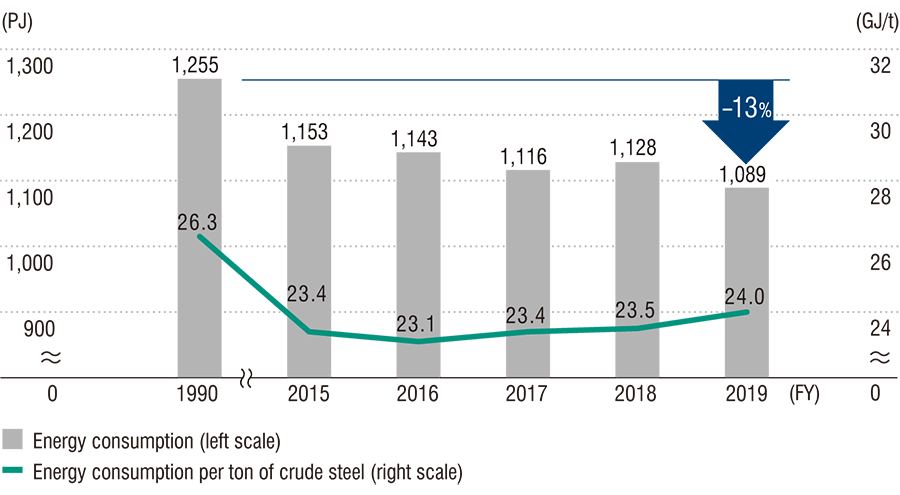
*1 PJ indicates peta-joules (1015 joules).
A joule is a
unit of energy, or amount of heat.
*2 GJ indicates giga-joules (109 joules)
Nippon Steel’s energy-derived CO2 emissions
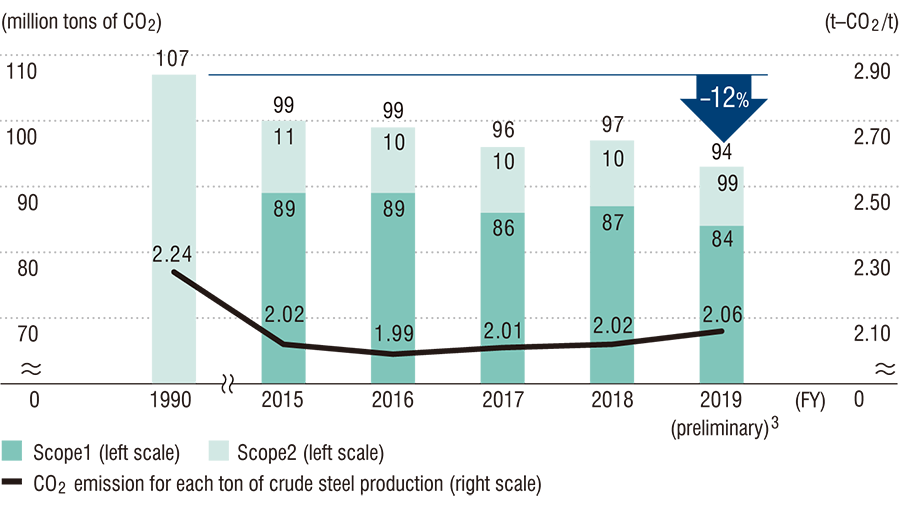
[Calculation method]
Based on the Action Plans for a Low-Carbon Society[Conversion factor]Source: METI, Agency for Natural Resources and Energy “Table of heat generation and carbon emission coefficient by energy source” (Revised January 31, 2020)[Boundary of data collection]Nippon Steel4, associated EAF mills (Osaka Steel, Sanyo Special Steel, Nippon Steel Stainless Steel, Oji Steel, and Tokai Special Steel), Nippon Coke & Engineering and three Sanso Center companies 5
*3 Preliminary figure: The amount of CO2 per unit of purchased electricity from a General Electricity Utility in fiscal 2019 is assumed to be the same amount as in fiscal 2018.
*4 Excluding energy consumption and CO2 emission associated with the IPP operation by the steelworks
*5 For these four companies, equivalent energy consumption required to manufacture materials purchased by the Nippon Steel Group is included.
*6 CO2 emissions associated with the use of electricity purchased from Cooperative Thermal Power Companies are included in Scope 2 from fiscal 2019. Accordingly, past figures are retroactively revised.
Breakdown of greenhouse gas (tons)
| FY2017 | FY2018 | FY2019 | |
|---|---|---|---|
| CO2 emissions from energy sources | 96,067,000 | 97,072,600 | 93,688,800 |
| CO2 emissions from non-energy sources | 3,182,936 | 3,270,100 | 3,234,831 |
| CH4 | 110,547 | 112,707 | 110,431 |
| N2O | 136,013 | 124,775 | 140,126 |
CO2 emissions in the value chain
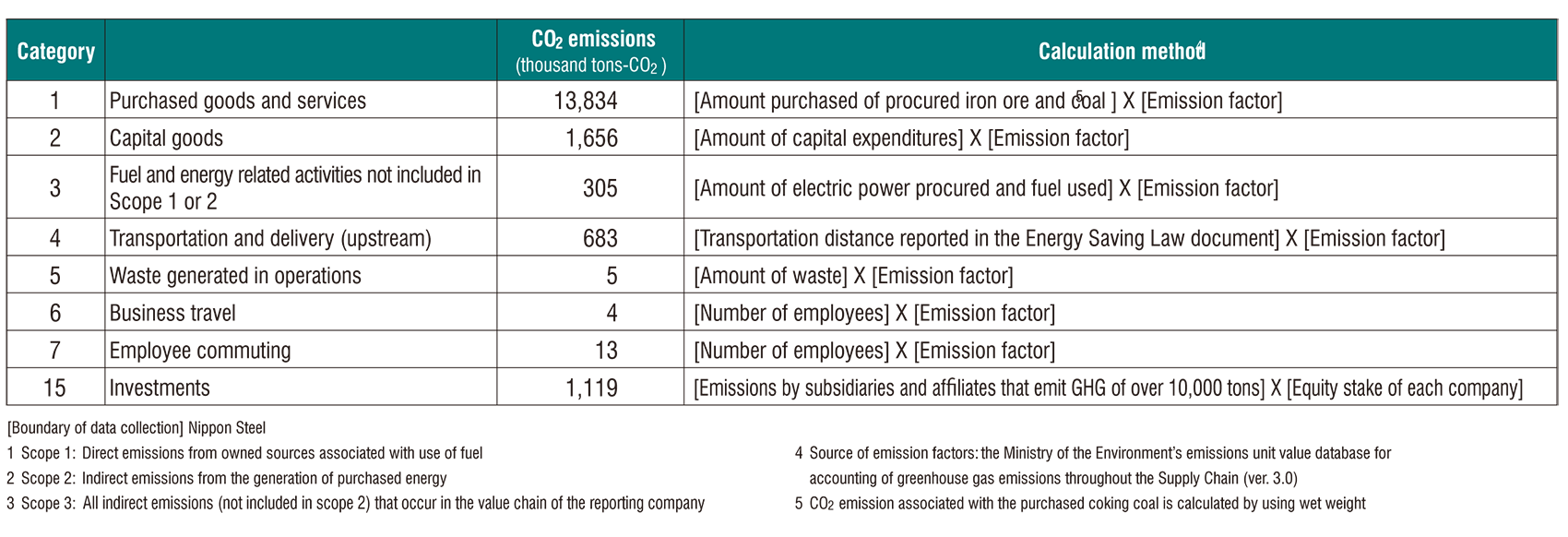
CO2 emissions in production of cement
|
| FY2014 | FY2015 | FY2016 | FY2017 | FY2018 |
|---|---|---|---|---|---|
| Cement production output (10,000 tons) | 232 | 221 | 208 | 216 | 218 |
| Cement production capacity (10,000 tons) | 335 | 335 | 335 | 335 | 335 |
| Clinker production output (10,000 tons) | 142 | 134 | 130 | 136 | 131 |
| Clinker production capacity (10,000 tons) | 163 | 163 | 163 | 142 | 142 |
| Clinker output/Cement output (10,000 tons) | 0.61 | 0.61 | 0.63 | 0.63 | 0.60 |
|
| FY2014 | FY2015 | FY2016 | FY2017 | FY2018 |
|---|---|---|---|---|---|
| CO2 emission amount (10,000 tons-CO2) | 127 | 122 | 118 | 122 | 117 |
| CO2 emission intensity (KG-CO2/t-cem) | 547 | 552 | 567 | 564 | 536 |
Use of alternative fuel (%)
Nippon Steel’s ratio of use of alternative fuel is as follows:
|
| FY2015 | FY2016 | FY2017 | FY2018 | FY2019 |
|---|---|---|---|---|---|
| Ratio of use of alternative fuel | 88% | 81% | 78% | 81% | 81% |
Ratio of power generated by by-product gas and exhaust heat in in-house power generation
Setting of individual companies’ goals on CO2 emission reduction
Amid the intensifying awareness on the climate change issues worldwide, Nippon Steel has established a “Zero Carbon Steel Committee,” attended by all five Executive Vice Presidents. The committee began discussion on subjects, such as individual companies’ scenarios (targets for 2030 and 2050 vision) toward a decarbonized society and R&D related to low CO2 emission technologies. We plan to disclose individual companies’ specific scenarios within the current fiscal year.
Japan Iron and Steel Federation’s action plans for a low carbon society
From fiscal 2013 on, Nippon Steel has been participating in the Action Plans for the
Realization of a Low-Carbon Society for further CO2 reduction by means of the three ecos. The
Phase I of the Action Plans for a Low-Carbon Society targets a 5 million ton reduction in
CO2 emissions by fiscal 2020. The Japan Iron and Steel Federation is focusing on a 3 million ton
reduction in CO2 emissions at the steelmakers’ own initiatives for maximum adoption of advanced
technologies based on its production assumption. The additional 2 million ton reduction is to be achieved
by an increase in the collected volume of waste plastics compared to fiscal 2005, as the amount of
reduction in emissions.
In addition, Nippon Steel makes publicly known its views and opinions on
diverse public policies concerning global climate change through the Japan Iron and Steel Federation.
Japan Iron and Steel Federation’s Action Plans for a Low-Carbon Society(“Three ecos and innovative technology development”)
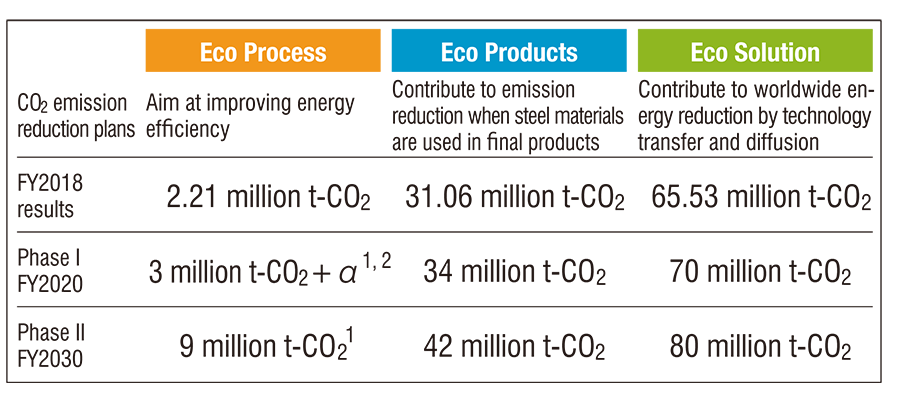
6 The target reductions in CO2 emission volume are based on a certain crude steel production assumption.
7 The primary focus is on a 3 million ton reduction in CO2 emissions by steelmakers’ own initiatives for efficient use of energy and other ways. Concerning collection of waste plastics and other ways, only an increase in the collected volume compared to FY2005 is counted as the amount of reduction in emissions.
Promote innovative technology development
In addition to promoting the three ecos, the industry has worked at developing the innovative steel making process (COURSE50) from a medium-tolong-term CO2 emission reduction perspective. From 2023 onward, under the Action Plans for a Low-Carbon Society, the global warming counter measures will be steadily implemented on the basis of the three ecos and COURSE50.
Use of bio fuel in independent power production results in CO2 reduction
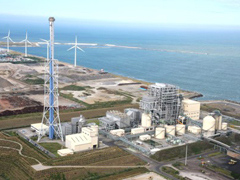
East Nippon Works Kashima Area’ 500,000 kW Thermal Power Station (an Independent Power Producer or IPP) began operation in 2007 and burns scrap wood chips, which are made from used wood pallets, as an alternative fuel to coal. In fiscal 2019, dregs from coffee making and wood chips, coming to approximately 8,060 tons in total, were used, resulting in a CO2 emission reduction of about 5,370 tons.
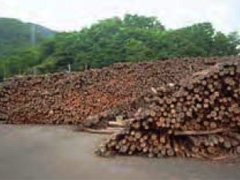
East Nippon Works Kamaishi Area utilizes biomass resources such as leaves, and branches trimmed from lumber trees as biomass energy. This also contributes to forest improvement. In fiscal 2019, woody biomass of 33,848 tons was used, resulting in a CO2 reduction of about 27,600 tons.
Adaptation to climate change
In addition to taking mitigation actions against climate change, Nippon Steel is making initiatives to prepare and adapt to potential impacts of such change. We have many products that are used for a long time as construction material for embankments and other public infrastructure. They contribute to providing solutions for “National Resilience,” such as protecting towns from flooding or high tides caused by heavy rains or typhoons. Adaptation to climate changes also leads to business opportunities for Nippon Steel. In various steelworks in Japan and overseas, water storage tanks have been installed and an administration office is built on a piloti structure, which allows to create an open space with no walls on the lowest floor and makes the building less vulnerable to tsunami. This is a part of efforts of Nippon Steel to be well prepared for emergencies such as flooding and high waves.
